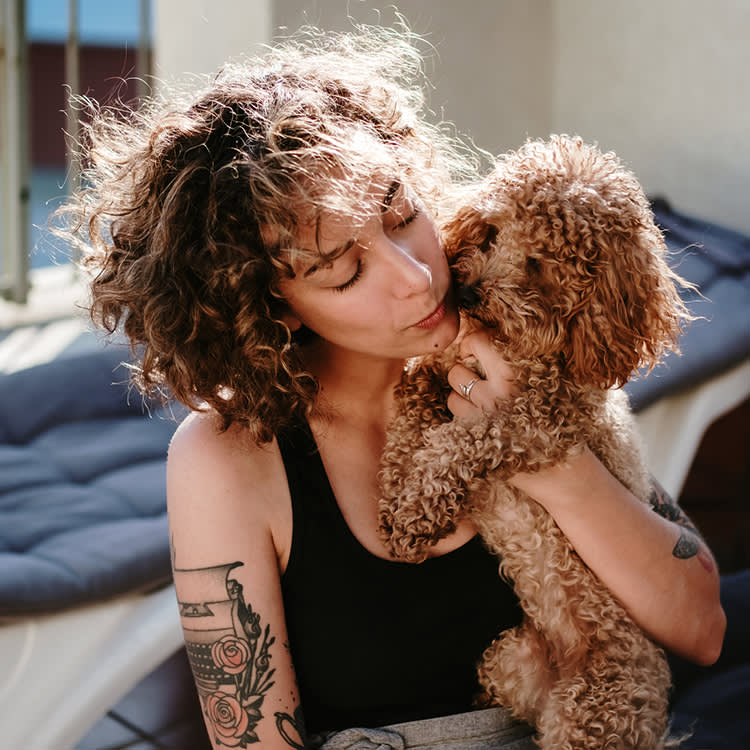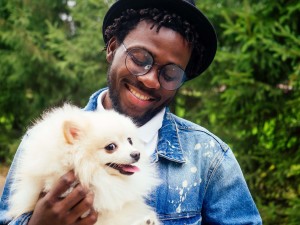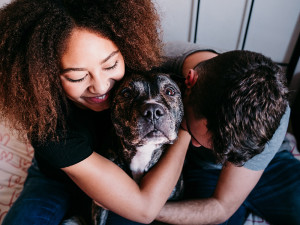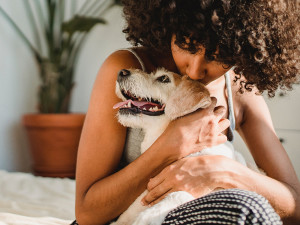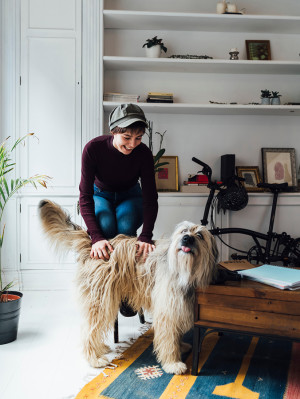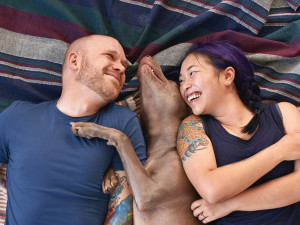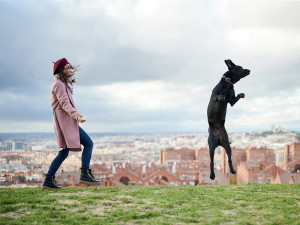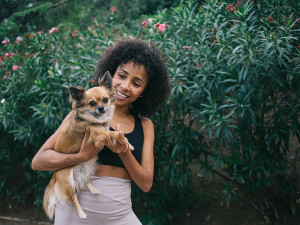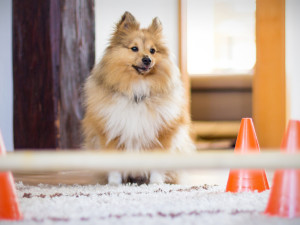How Deep Is the Love for Our Dogs?
The connection between people and dogs is the stuff of legend.
It’s easy to see that humans love dogs. Greece, India, Sumatra, Egypt, Scotland, Turkey, China: cultures around the world have dog-headed (cynocephalic) heroes or gods. The existence of a word to describe such phenomena speaks to how common they are. Although other mythical human/animal chimeras are known — the centaur and minotaur, for example — none are as widespread as those involving dogs. This depiction of creatures with the traits of both humans and dogs attests to the longstanding idea that we are connected. We are, it seems, naturally predisposed to form deep connections with dogs.
Why do we love dogs so much?
Chemical systems responsible for the most powerful feelings of love between humans are also activated during interactions with dogs. This means that physiologically speaking, we bond with our dogs in the same way we do with our children: through a positive-feedback loop involving oxytocin, a hormone involved in many aspects of social behavior.
Trick question: All dogs are perfect! But find out which type is the best fit for you.
Petting our dogs raises levels of oxytocin in both species, which makes us feel closer, which makes us seek out more physical contact, which raises our oxytocin levels, which makes us feel even closer, and so on (and on and on). Even gazing into one another’s eyes without touching generates the same pattern. Studies of canine attachment show that dogs who have strong connections to their people are more confident and better able to explore the world. (It’s no coincidence that scientists have found that to be the case in human children as well.)
Dogs and people recognize emotions in members of the other species to the degree that is typically only possible within one’s own species. Dogs are able to distinguish neutral human expressions from ones conveying emotions, as well as to make a distinction between different emotional expressions — say, happy human faces and angry ones. This isn’t news to anyone who has ever lived with a dog; we’re all aware that trying to keep our emotions a secret from our dogs is impossible. They just know.
How much do you spend on your pet per year?
Why do dogs love humans?
We care for our dogs with love and an emotional connection matched by no other. Even people with no particular training in canine behavior are generally good at reading some dog emotions. A sad dog is easy to recognize, and so is a happy one. Highly fearful dogs can’t fool people either, though those without much dog experience don’t always recognize dogs who are a little bit anxious or sort of nervous.
The close connection between dogs and people is evident in another tool in the canine tool box: they are adept at using facial recognition to identify individuals. Even more interesting, dogs “read” human faces in much the same way that people do, with a specialized part of the brain used for processing that particular type of visual input. People also understand dog vocalizations. For example, we are able to recognize different types of growls. In one study, people were easily able to distinguish play growls from aggressive ones and were even able to identify growls emitted in two different, potentially aggressive contexts: growling at another dog over food and growling at an approaching stranger. People with more dog experience did better, but even novices had success.
Just as we understand dog vocalizations, they are able to make sense of ours, and are responsive to our tone of voice as well as our words. In both human and dog brains, the same area of the temporal lobe responds to human speech; crying and laughing and dog whimpers and intense barking cause activity near the primary auditory cortex of both species.
So, it’s a simple biological fact that physiologically, visually, acoustically and cerebrally, humans and dogs just get each other. The closeness we feel to dogs is a natural outcome of that biological connection.
Building a love connection
Beyond biology, there are plenty of catalysts for this mutually rewarding relationship. As with human friendships, when we spend time with a dog and have experiences together, our love grows, the relationship deepens, and we feel even more bonded. It seems that the more we share, the closer we feel.
One of the things we can share with dogs is a sense of purpose. That’s why it makes sense that some of the best examples of the deepest connections between people and dogs come from teamwork — working together to accomplish a common goal. When a dog and a person team up, the connection between our species seems to be the strongest and most inspiring.
There’s a reason working dogs and their handlers are called only “teams.” A dog and a person with a job have a mutual purpose, and the cooperation and partnership involved naturally lend themselves to a closeness that extends beyond the work. Whether the job involves search and rescue, detection, military, police, or service work, they become close when dogs and people share a purpose. Equal partners who rely on each other, each contributes a unique skill set that must be integrated for success. That trust is part of what makes them feel close and able to work together successfully for a common purpose. The positive feedback loop of trust and accomplishment further bonds them.
The internal experience of deep love and connection to a dog is one way to be aware of the closeness we share with canines, but we can also observe it from the outside. Take canine freestyle, a competition based on a combination of obedience training, trick training, and dance. Simply put, it’s dancing to music with a dog, with the purpose of demonstrating artistry, style, athleticism, and the ability to work as a team. Dogs doing freestyle who are literally in sync with their people inspire those who watch them because the behavior in the routine is a visual and symbolic manifestation of emotional closeness.
Dogs often prefer the folks who play with them to the folks who feed them, even when really great treats are involved. Play is so powerful that across a wide variety of species, mothers who play with their offspring are more likely to have strong relationships with them. Having fun together may be the very best way for individuals to build a relationship.
To dog with love
Our 30,000 year-old relationship with canines has evolved as a love letter to dogs, so to speak. This deep interspecies connection cannot be explained by logic or reason. The best way to describe the most magical human/dog relationships is simply to say that the dog and the person are in love. The dogs involved are often described as “heart dogs,” “soulmates,” or simply as the “love of our lives.” These are the once-in-a-lifetime dogs that change us forever.
We love our dogs and feel connected to them in a way that defies definition, yet we understand it so well. Long before the biology of our deep and beautiful friendships was understood, we knew that our bond was special. The hyperbolic “We can’t live without them!” may not be literally true, but most of us certainly could not live happily without them.
